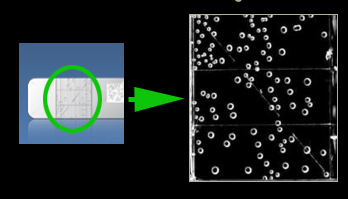Modern scanning, editing, and printing technology has made it easier than ever to copy an image or piece of art and reproduce it – speaking from personal experience, it can be quite difficult to know which is the original, and which is the copy!
And, of course, we’ve all heard reports and stories about unauthorized use, copying, and outright fraud involving a photographer’s or artist’s work.
The immediate impact is straightforward: money-out-of-your-pocket theft.
But what about the loss of credibility for the artist/photographer – and the reduction in value of a limited edition? Uncertainty about the provenance or number of pieces in the market quickly erodes the value of work already sold – and of course, work that is still on the market.
A company called ARTtrust has created a new, unique solution for these problems – one that helps users to identify and verify authorized work, discourages theft, prevents unauthorized copying, stops “limited” edition over-runs, and more. ARTtrust makes it possible to provide a unique identity to each print in an edition or to each unique work, whether lithography, serigraphy, design, sculpture, etc.
ARTtrust is an identification and verification system that can be used by individuals, galleries, curators, collectors, museums, and others – the ARTtrust system is easy to understand and implement, and is as nearly perfect a security solution for art and phtography as exists today. ARTtrust provides for control by the artist, owner, authorized organization, or delegated curator or printmaker. Founder and CEO Philippe Serenon likes to say that “ARTtrust is simple, precise, secure, accessible, and authentic”. ARTtrust’s international partners include HP, Innova, Canson, Hahnemuhle, and others.
The ARTtrust system includes:
– A set of three unique identification tags, provided in a set, that cannot be duplicated. One tag is affixed to the artwork or print, another to the Certificate of Authenticity, and the third to the owner’s or printmaker’s file copy or BAT. (more on this later). The tags cannot be removed intact – any tampering destroys the tag. Each set of tags in unique to the individual piece of art. 
ARTtrust Bubble Tags
– Each item that is tagged is registered via the ARTtrust online system. A digital image is uploaded, and the unique identification tags are linked to this image. The record can be accessed online by authorized users or a potential customer, providing quick and accurate validation of the item.
– The owner, authorized user, or delegate of the artist can print a pre-formatted Certificate of Authenticity (COA) to accompany the work. The tag on the art work or photograph can be matched to the tag on the COA via the ARTtrust database. Another certificate can be printed for use as a file or reference copy – this carries the third tag.
The technology at the core of the ARTtrust system is the Bubble Tag. This is a 3-D polymer tag which has a one-of-a-kind pattern of bubbles embedded in it. Each Bubble Tag is as unique as a fingerprint, virtually impossible to duplicate. (ARTtrust freely admits that they can’t do it – and they believe no one else can, either.)
ARTtrust also provides an on-line gallery for its customers – whether they are individuals or organizations. The gallery includes a digital image, the serial number of the ARTtrust tag assigned to the work, and an image that can be compared to the ARTtrust tag.
If you click on one of the images, you’ll see this:
Anyone who is interested in buying or exhibiting a print can visit the ARTtrust website, find the online record*, view the bubble tag for verification (compare the tag image on screen to the tag on the artwork – and match the ID numbers), and review additional details about the print, such as availability and pricing. (*One can enter the serial number on a tag, and easily retrieve the record of the work connected with that tag.)
Interestingly, there is also an iPhone application which can read an ARTtrust tag and provide verification on the spot! You can download the iPhone app on the iTunes App Store – just search for i-ARTtrust.
Here’s a link to the ARTtrust web site – the front page is shown below.
Now photographers and artists, individuals and organizations have an independent, secure resource that helps them control and market their work, preserve value, prevent fraud and theft – and it is accessible online almost anywhere in the world.
____________________
Disclosure: I have in the past acted as a consultant and beta tester to ARTtrust and some of its business partners. I received no compensation for writing this blog post.





